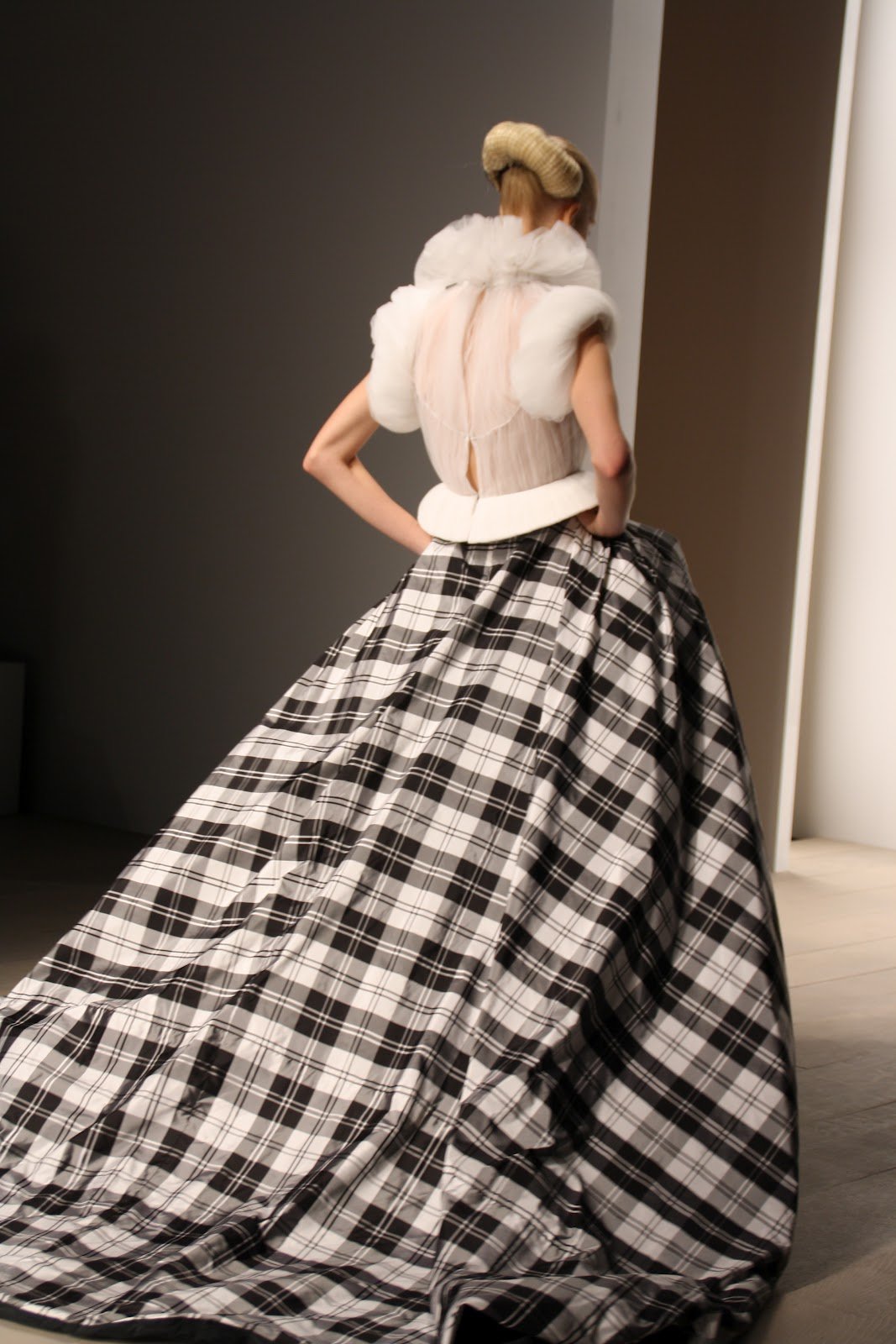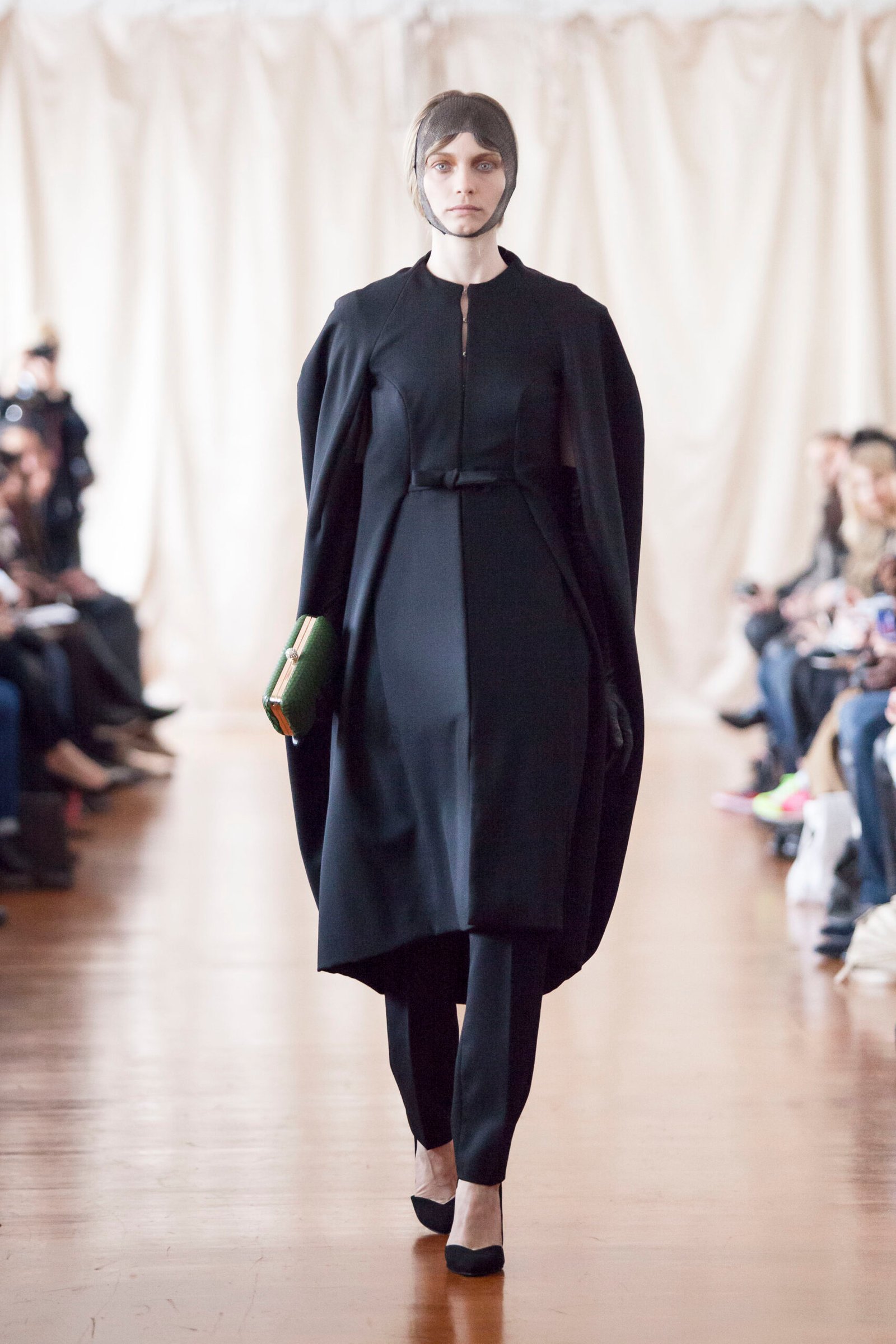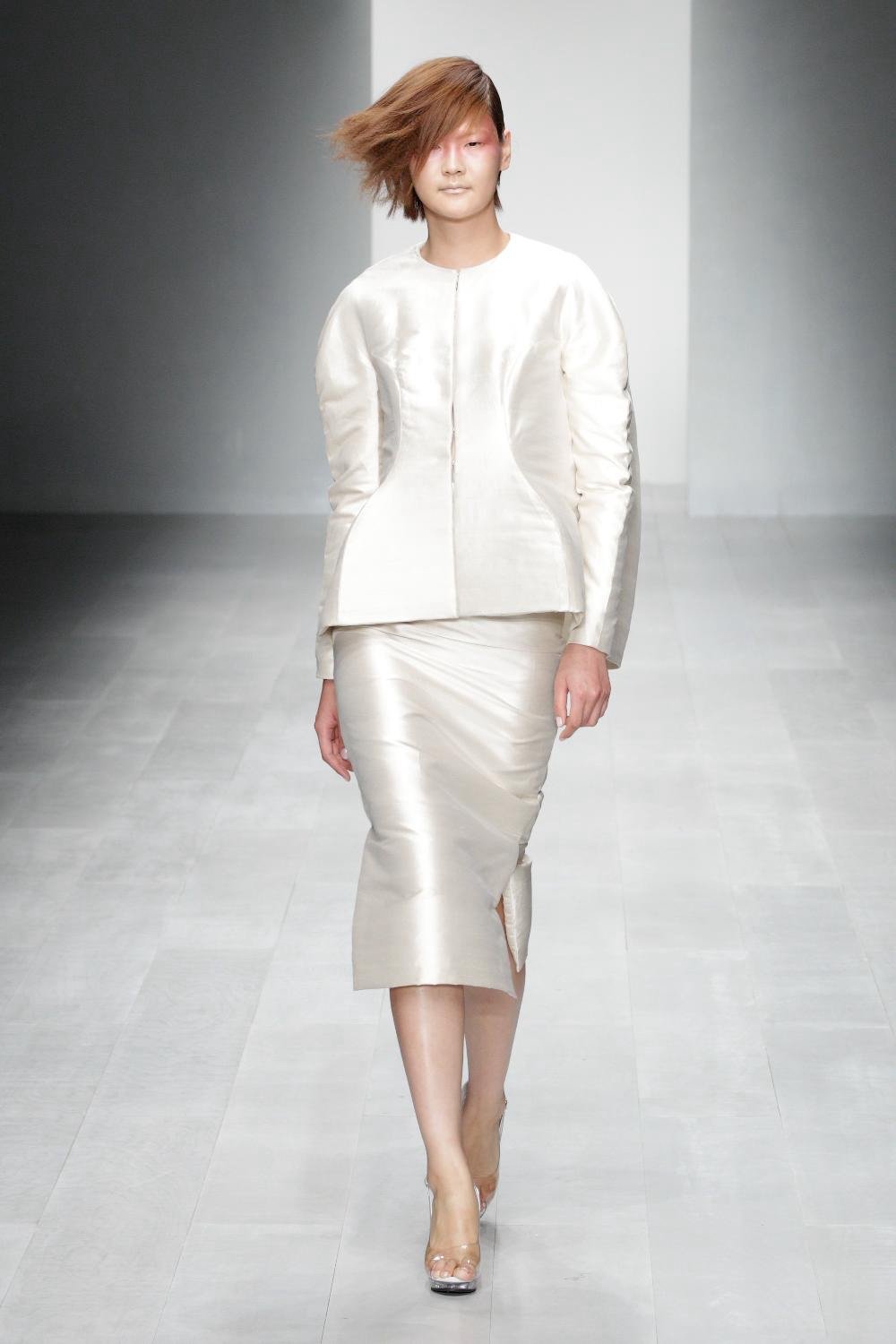Corrie Nielsen _ The Architecture of Elegy
By Alex Babboni

S/S 13
To speak of Corrie Nielsen is to speak of a fashion house that thinks like a filmmaker and constructs like a sculptor. Hers is a world where garments do not simply adorn; they narrate. Known for her three-dimensional silhouettes and archival depth, Nielsen operates with the severity of classicism and the fluency of a visual poet. Her tailoring recalls a silent cinema that never needed dialogue, where structure speaks louder than words.
A graduate of Central Saint Martins, crowned winner of Fashion Fringe by John Galliano, and shaped by six years of intensive work under Vivienne Westwood, Nielsen emerged not as a trend-follower but as a designer concerned with time: how to fold it, preserve it, and give it form. Her early London Fashion Week collections blurred the boundaries between theatre, pageantry, and bespoke design, giving rise to pieces that echoed the ritualistic power of ecclesiastical dress, yet remained surprisingly tender. By the time she was showing on the official Paris Fashion Week calendar, Nielsen had distilled her practice into something rarer, a fashion vocabulary steeped in history, yet fearless in its abstraction.
There is an architectural tension to her shapes. Box pleats resemble structural buttresses, sleeves become battlements, and skirts echo the curvature of ancient armour or ceremonial wear. Her references span from the Jacobean court to Japanese minimalism, though they never settle into mere homage. She doesn’t reference the past for ornament; she revives it, breaks it apart, and reanimates it through the body.
In this way, Nielsen’s work resonates with the mise-en-scène of filmmakers like Peter Greenaway and Derek Jarman: highly composed, formal, and obsessive in their symbolic details. Every look from a Corrie Nielsen collection could be imagined not on a red carpet, but in a stately tracking shot. The garments demand movement, angles, and atmosphere. Like cinema, they are immersive environments, sculptural forms designed to be seen, studied, and emotionally processed.
Yet beneath the formality lies a kind of interiority, a rawness. Whether through the romantic austerity of her silhouettes or the quiet force in her drapery, there is a coded grief in Nielsen’s vision. Her garments are not made for passive consumption but for reflection. Nielsen creates fashion with a philosophical framework. It exists as much in the mind as on the body.
What also marks her distinction is the refusal to chase pace. In a cultural moment obsessed with immediacy and algorithmic visibility, Nielsen instead returns to rigour, working with garments that take time to make, that carry a past and imply a future. She does not bend to the seasonal churn. Instead, she sees the fashion system as a stage, a film set, a space to choreograph precision, provoke thought, and present elegance as a form of resistance.
Her latest projects suggest a quiet yet profound resurgence. With a multi-phase business model and a strategic return to made-to-measure, Nielsen aligns her artistic intent with sustainability and bespoke ethics. In doing so, she reasserts the idea of fashion as a durable art form; one that exists outside of spectacle while remaining deeply cinematic in vision.
Corrie Nielsen’s work isn’t nostalgic. It’s necessary. It insists on beauty with depth, silence with meaning, and history with edge. In a world saturated by noise, her garments speak with uncommon clarity, like a silent film by Carl Theodor Dreyer, Lois Weber, or Victor Sjöström: composed, haunting, and impossible to forget.

A/W 11

A/W 12

A/W14

S/S 11

S/S 13

